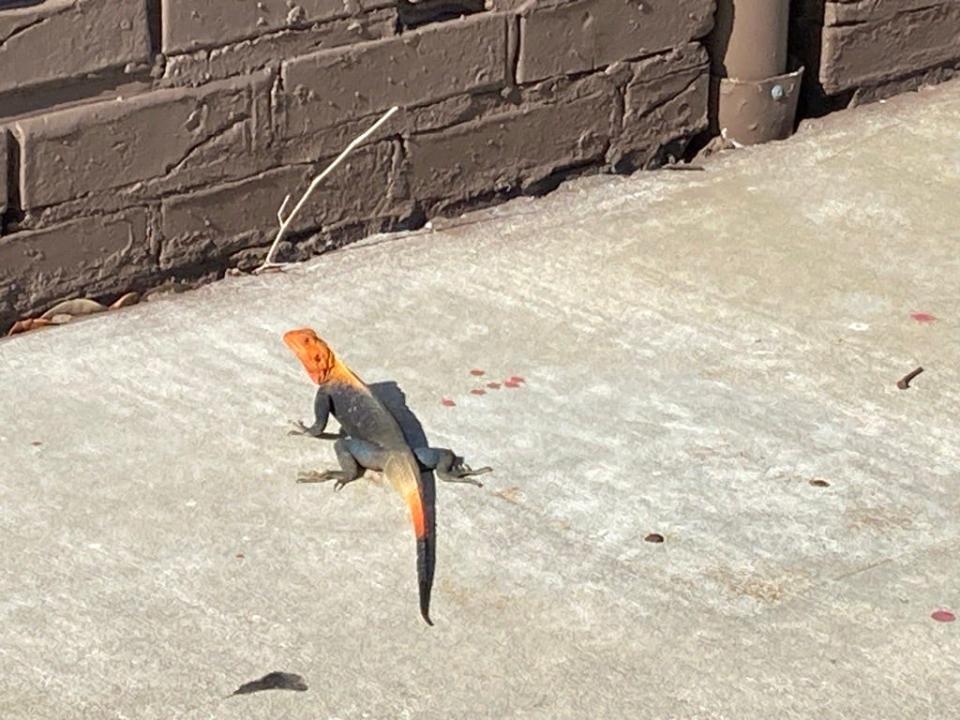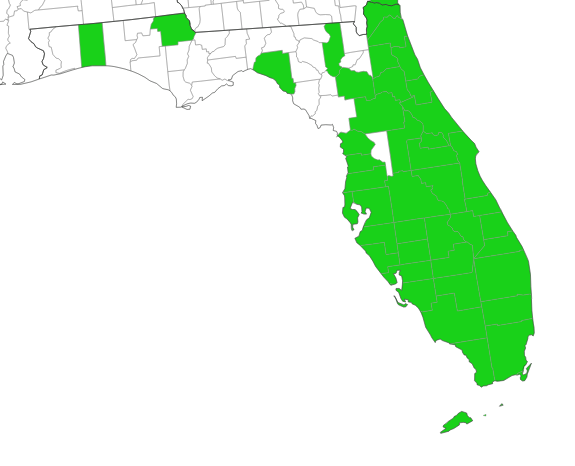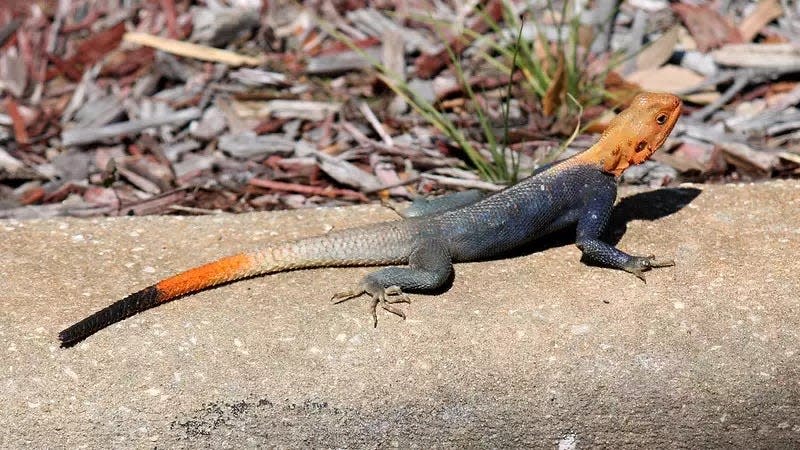This big lizard is orange and blue, and invasive. It may live in your Florida neighborhood
What can pull off an orange head and indigo blue body ... and is probably living in your neighborhood?
Say hello to the Peter's rock agamas, also known as the red-headed agamas. They're yet another invasive species that has been spotted in more than half of Florida's 67 counties.
Step lively if you spot them. They can move quickly!
Here's a few interesting facts about them, including whether you can keep them as a pet or kill them on your property.
When did Peter's rock agamas first appear in Florida?

Peter's rock agamas were first documented in Florida in 1976, according to the Florida Fish and Wildlife Conservation Commission.
They are native to tropical, sub-Saharan Africa.
How did the agamas get to Florida?
Like so many other invasive species, the Peter's rock agamas were introduced via the pet trade as either escaped or released pets, FWC said.
They're among about 50 species of nonnative lizards now found in Florida, according to the University of Florida.
Where have red-headed agamas been reported in Florida?

Populations exist mostly in southern and southwestern Florida with the largest, established populations occurring in several counties across Central and South Florida, according to the FWC.
The agamas are established in these Florida Counties: Monroe, Miami-Dade, Collier, Lee, Broward, Palm Beach, Charlotte, Sarasota, Manatee, Pinellas, Hillsborough, Polk, Martin, St. Lucie, Indian River, Brevard, Okeechobee, Orange, Seminole, and Volusia.
There have been reported sightings as far north as Okaloosa and Nassau counties in Florida. There have even been been sightings in South Carolina and Georgia.
"Peter's rock agama are largely confined to residential sites and human-dominated areas in Florida, and they do not normally appear to invade natural habitats," according to a University of Florida/IFAS report.
"They may be seen on building walls, fences, tree trunks, sidewalks, curbs, and pavement. They usually do not stray far from the cover of rocks, shrubs, and other hiding places. They are wary of people and quickly flee if approached too closely."
How big are these red-headed agamas?

While they're nowhere near as large as iguanas or Nile monitors — more non-native species found in Florida — the Peter's rock agamas aren't the little lizards that hide in your door jamb to sneak inside your house.
An adult male is about 8 to 12 inches long. The females are smaller, averaging 4 to 5 inches long.
Breeding males are the colorful ones, with an orange or red head, indigo blue or black body, and a tail that is bluish white at the base with an orange middle segment and a black tip, the FWC said.
Pregnant females typically have orange patches on their bodies.
Non-breeding males and females tend to have the same coloration with brownish, rough-scaled bodies, light-colored lines on the head and neck, and a whitish band on the back of the thighs that extends onto the sides of the tail.
What do Peter's rock agamas eat?
Agamas feed mostly on ants, grasshoppers, crickets and beetles and other insects, but they've also been seen eating snakes, lizards, birds and mammals, as well as their own offspring, the FWC said.
Is your pet in danger if it eats a Peter's rock agama?
Peter's rock agama do not pose a threat to pets or people, UF said.
While the bite of a large agama could be painful, unless it's being handled, there is no chance of a bite.
What is the impact of Peter's rock agamas in Florida?
"Because of their size and high population densities, they may pose a threat to small native insects and reptiles both by preying upon native species and competing with them for resources," the FWC said.
"Peter’s rock agamas are often easy to see but can be difficult to catch. Eradication of established populations in Florida is likely not feasible."
Are Peter's rock agamas protected? Can you kill them?
Agamas are not protected in Florida except by anti-cruelty laws, the FWC said.
They can be humanely killed on private property with the landowner's permission.
They also can be captured and humanely killed all year and without a permit or hunting license on 32 commission-managed lands in South Florida.
Can you have a red-headed agama as a pet?
Yes, but they are classified as a Class III wildlife. A permit is required if you intend to keep them for exhibition or sale.
A permit is not required to possess them as personal pets, the FWC said.
The agency emphasized: "Don’t Let It Loose! Never release nonnative animals into the wild, including agamas. Doing so can negatively impact native wildlife and ecosystems, as well as be dangerous for your released pet."
If you want to get rid of a pet agama, the FWC has an Exotic Pet Amnesty Program, which rehomes nonnative pets to qualified adopters.
How to report sightings of non-native species
Report sightings of nonnative species:
Using the free IveGot1 app, available on iPhone and Android.
Online at IveGot1.org.
FWC’s Invasive Species Hotline at 888-Ive-Got1 (483-4681)
This article originally appeared on Treasure Coast Newspapers: Agama rock lizard can be found throughout Florida, where people live

